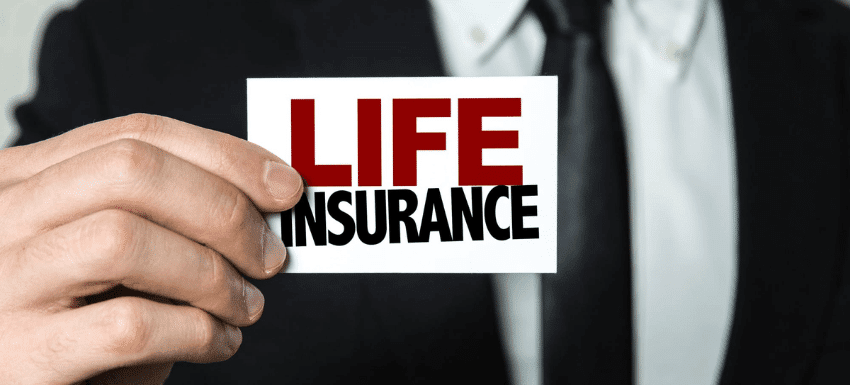
Are you trying to find the life insurance coverage that never expires? If so, you are not by yourself.
Although many individuals are interested in this kind of policy, they frequently lack basic knowledge of its nature and operation.
We’ll define whole life insurance in this blog article and offer some advice on how to determine if it’s the best option for you.
What is whole life insurance?
Whole life insurance is a type of permanent life insurance that provides coverage until death.
Throughout the whole life insurance policy, the premiums and death benefit remain constant. A full life insurance policy also doubles as a tool for investing.
You pay a portion of your premiums into a savings account that grows tax-deferred at a rate determined by the insurance company.
The provider deducts administrative costs for handling the insurance policy, although other investment-type insurance companies might not, which contributes to the lower returns on investment compared to other investment vehicles.
Whole life insurance quick facts
| Features | Whole life insurance |
| Duration | For life |
| Cost | 5 to 15 times costlier than term life |
| Level Premiums | Yes |
| Guaranteed Death Benefit | Yes |
| Guaranteed Cash Value Growth | Yes. Cash value grows at a steady rate |
| Notes | There’s no risk element in whole life insurance, but the growth rate tends to be lower than other traditional investment tools |
How does whole life insurance work?

Whole life insurance offers lifetime protection and accrues cash that is available for withdrawal at any time. Your premium payments are split between a portion that goes toward keeping the policy in effect and another that is invested in a tax-free savings component. So, whole life insurance serves as a tool for investing as well as a means of ensuring your family’s financial security following your passing.
Term life or Whole life insurance

Term life and whole life are the two types of life insurance policies you are most likely to encounter when looking for coverage. While whole life insurance can meet a variety of purposes, not everyone may be a good candidate.
The simplest and most basic type of insurance is term life insurance. It only offers life insurance coverage in exchange for premium payments (unless you add riders). However, the duration of the life insurance coverage is set.
There is no expiry date for whole life insurance. It also serves as a tool for investing, enabling you to accumulate monetary value that you can utilize now and in the future. Rates for whole life insurance are significantly higher than those for term life.
Here’s a quick rundown of the main differences between the two.
| Features | Term Life Insurance | Whole Life Insurance |
| Cost | Most affordable life insurance product | 5 to 15 times more expensive than term life |
| Choice of policy length | Yes. Coverage is available for a term of 1 year to 35 years | No. Coverage is for your entire life. |
| Guaranteed Death Benefit | Yes | Yes |
| Guaranteed Cash Value Growth | No | Yes |
| Level Premiums | Depends on the term life insurance product you select | Yes |
| Dividends | No | Some whole life insurance policies pay dividends |
Advantages of whole life insurance

Protection for life
A whole life insurance coverage is an ongoing arrangement. No matter when you pass away, a guaranteed death benefit will be paid to your loved ones.
Level Premiums
Over the course of the insurance, the premiums are constant. Some whole life insurance policies permit early policy termination by the policyholder. You won’t need to pay payments after that, but the life insurance coverage will still be in effect until your death.
Builds Cash Value
Whole life insurance’s cash value is a key selling feature. Your insurance policy includes a savings account that accumulates over time. The monetary value can be used as security for a third-party loan, as well as a source of credit.
Typically, a whole life policy’s cash value increases gradually at first then quickly after a few years. Your policy’s cash worth may eventually increase to the point where you are able to use it to cover premium payments up until your death.
Tax Advantages
Normally, a life insurance policy’s death payout is tax-free. The cash value also increases on a tax-favored basis. As long as the amount you withdraw does not exceed what you have already paid in, you won’t be taxed on it.
A whole life policy can be an alternative investment option to think about if your RRSP and TFSA have reached their maximums.
Potential Dividends
Certain whole life insurance plans offer yearly dividends. To accelerate the growth of your policy’s cash value, you can reinvest payments. As an alternative, you can use the funds to increase your level of coverage or settle all or a portion of your premium.
Cost of whole life insurance
Term life insurance is less expensive than whole life. What amount more? Well, for the same level of coverage, whole life insurance may cost five to fifteen times as much as term life insurance.
The cost of whole life insurance is high for two reasons. One, since there is no expiration date, the entire death benefit is always paid – providing, of course, that you pay premiums. Additionally, it has a savings element.
Sample Whole life insurance rates
| Coverage Amount | Male | Female |
| $50,000 | $50/ mo | $42/ mo |
| $100,000 | $90/ mo | $75/ mo |
| $250,000 | $211/ mo | $178/ mo |
| $500,000 | $416/ mo | $337/ mo |
| $1,000,000 | $788/ mo | $640/ mo |
Here is a sample of monthly whole life rates for a 40-year-old, non-smoker based on a Standard health rating.
The cost of life insurance is always specific to the insured. The cost of your insurance is determined by a number of variables, including:
Age

Whole life insurance increases in price with age, just as other insurance policies. The premium amount typically increases by 8 to 10 percent for each year of age.
Coverage amount
The premium payments rise in proportion to the death benefit. Therefore, a whole life insurance policy with a $500,000 payment will be more expensive than one with a $100,000 death benefit.
Health
The insurer will examine your health as part of the underwriting procedure when you apply for a whole life insurance policy. You’ll have to undergo testing and respond to inquiries about your health.
Healthy applicants are classified more favorably and, as a result, have a higher likelihood of being accepted. However, several medical disorders, such as diabetes or high blood pressure, raise your rates.
Family’s medical history
Diabetes is one of several illnesses that frequently run in families. Due to this, many insurers consider the medical history of your family while evaluating your application. Higher premium costs may result from a family history of diseases like cancer, diabetes, or heart disease.
Smoking status
Smoking raises the possibility of dying too soon. If you smoke, you might have to cough up to two or three times as much for coverage.
Occupation & Lifestyle
The insurer may increase your premium rates if you have a job or a pastime that puts you at risk, such as skydiving or bungee jumping.
Your Gender
When it comes to life insurance, men pay 38% more than women for the same coverage on average, with the premium gap widening with age, because they have a lower life expectancy than women. (So if you are a man, that’s another reason to buy life insurance as early as possible).
Types of whole life insurance
Whole life insurance comes in many different forms. Whatever your needs are, you’re probably going to find one that fits.
Ordinary whole life insurance
As long as you live, the premiums are fixed. The insurance coverage accrues cash value that increases tax-deferred. You have no say in the investments made with the monetary worth. Compared to a term life insurance policy for the same amount, the annual cost will be substantially greater in the beginning.
Limited payment whole life insurance:
You pay the necessary premiums for a set period of time, such as 5, 10, or 20 years. But the advantages persist throughout your entire life.
Single premium whole life (SPL) insurance
For one, significant payment, the insurance provider promises a death benefit till your demise. The cash value increases substantially more quickly because the insurance policy has been paid in full.
Survivorship life insurance
Instead of just one person, it insured two. Joint-last-to-die insurance is an option. This indicates that the death benefit is only paid to beneficiaries upon the passing of the second insured. Because of this, this kind of policy is also known as second-to-die life insurance.
Universal life (UL) insurance
The premium installments can be changed, and the death benefit can be modified as necessary. Additionally, the rise of the monetary value is not ensured. How the insurer invests the cash worth of the coverage is up to you.
Variable universal life (VUL) insurance
The cash value and death benefit of the policy are linked to a specific investment account. They rise in value together with the chosen investments. However, they may potentially significantly decrease if the fund performs poorly.
Participating in whole life insurance
Every time the insurance provider produces an extra profit, you have the right to share in those profits and get an annual payout. Dividends can be cashed out, applied to more insurance, or used to lower future premium payments. Alternatively, you might earn interest by depositing dividends with the insurer.
Final Expense Insurance
It provides a smaller death benefit than a typical whole life insurance policy, making it more affordable and simpler to qualify for. It is intended to cover costs associated with the end of life, such as funeral and medical expenses, and is also referred to as burial insurance.
What are the best whole life insurance companies in Canada?
Although purchasing the ideal life insurance coverage from the ideal insurer can be challenging, it doesn’t have to be. Find the finest coverage at the best price by working with a third-party broker.
Not everyone has the same need for life insurance. There is no one-size-fits-all provider of whole life insurance.
Canadian life insurance providers provide life insurance for a variety of financial objectives. With professional assistance, you can quickly choose a whole life insurance coverage that both satisfies your present financial needs and long-term objectives.
Myths & Misconceptions
Although ignorance may be bliss, it’s not when looking for life insurance. You may be unable to select the appropriate kind of life insurance if you have an incorrect or inadequate grasp of what you’re purchasing.
Myth #1 – You need to be in perfect health to qualify for life insurance
Healthy individuals are rewarded by insurance companies with lower premium costs. However, it doesn’t follow that if your health isn’t good, you won’t be accepted. You will pay higher premium rates if you smoke or have health issues like diabetes or high blood pressure.
But even then, it’s not the end of the road for you. A severe illness may instantly disqualify you from typical whole life insurance coverage. No medical exam life insurance and assured issue life insurance are also options.
Myth #2 – Life insurance is too costly for seniors
There is no way around it – getting life insurance after the age of 60 is much more expensive than doing so before the age of 30. That’s because your danger of passing away increases as you age. And as a result, premium rates increase.
Nevertheless, there is a low-cost life insurance policy available for seniors to satisfy particular requirements. Additionally, it is referred to as last expense life insurance. It can assist in paying for end-of-life expenses including medical treatment and burial fees and is simple to obtain and easy on the wallet.
Myth #3 – Term life insurance is be better than whole life
These are two distinct categories of life insurance plans that cater to various purposes. As a result, contrasting them is somewhat akin to contrasting apples with oranges.
For financial objectives that have a deadline, term life insurance is a better option. For instance, you could want to set up a safety net to help your spouse pay off the mortgage in the event that you pass away or to financially shield your children until they can support themselves. It is a wise decision if you’re looking for a cheap solution to safeguard your loved ones’ finances.
On the other hand, whole life insurance is the best option in circumstances like the following:
You want to leave a financial legacy to your heirs: You may rest easy with whole life insurance since you know your kids will get the death benefit if you pass away.
You want to preserve the value of your estate for your heirs: acquiring entire life insurance through a trust to handle your estate’s tax obligations after your passing.
A spouse or partner depends on you financially or you have a special-needs child: With the help of a whole life insurance policy, you can be sure that your loved ones will be provided for once you are no longer able to look after them.
You want to create an extra source of savings: You have access to a pool of tax-free money through a whole life insurance policy in the form of a policy loan.
Alternatives to whole life insurance
Whole life insurance has some drawbacks, so the following options are worth taking into account:
Term life insurance:
You can get a lot more coverage for the same price by paying five to fifteen times less than the cost of whole life insurance.
Universal life insurance:
Provides lifelong coverage and includes an investment component. But the cash value grows differently, which may suit your unique needs.
Single premium life insurance:
You make a single payment that fully reimburses the coverage in place of monthly or yearly premium payments. The cash value increases significantly more quickly as a result.
Is whole life insurance worth it?
People with unique circumstances should consider whole life insurance. Are you financially dependent on your spouse or partner? Do you have a child with special needs?
If you answered yes, whole life insurance may provide you with peace of mind because you will know that, whenever your death may occur, your family will receive the benefit.
Have you exhausted all of your other investment options? If so, you may be a good candidate for whole life insurance.
Term life insurance can be a better option for everyone else because it is less expensive.
To learn if whole life insurance is a better option for you and to obtain the best pricing for the amount of life insurance you may require, get in touch with an independent broker.
Keys Takeaways
- Whole life insurance covers you until you die, and the premiums and death benefits are the same throughout the life insurance contract.
- Whole life insurance provides lifelong coverage and builds cash value over time.
- With whole life insurance, returns on investment are lower than other investment vehicles.
Common FAQs
What are the main differences between term life and whole life insurance?
Term life insurance covers you for a limited period and doesn’t accumulate cash value. Whole life insurance, in comparison, stays in force until you die and builds up cash value that you can use while alive. However, these perks don’t come cheap. Whole life is substantially more expensive than term insurance.
What are the main differences between whole life insurance and universal life insurance?
While whole life and universal life insurance are very similar, there are a couple key differences between the two. Whole life insurance is all about guarantees. It provides a guaranteed level premium, guaranteed death benefit, and guaranteed cash values. That means your premium will stay the same, as would the death benefit, and the cash value will grow at a rate set by the insurer. In whole life insurance, the insurer decides how the cash value is invested.
Universal life insurance offers flexibility — not guarantees. You can change your premium payments and adjust the death benefit as you see fit. Also, the cash value doesn’t grow at a steady rate. In the case of universal life, you decide what the investments consist of.
Is whole life insurance a good investment?
A portion of your whole life insurance premium gets deposited into a tax-free savings account. As the account grows, you can borrow against it or withdraw money from it.
However, compared to other investment tools, the return on investment on whole life insurance policies tends to be lower and fees higher. For this reason, whole life insurance is a good fit for only those people who’ve already maxed out other investment vehicles.
How much is whole life insurance?
Whole life insurance premiums are unique to the person applying for coverage. The insurer sets your premium rate depending on your insurance needs and other personal factors, like age, health, and smoking status.
Which is the best life insurance policy?
The answer to this question isn’t found in the back of the book. Life insurance is a deeply personal purchase and there are many factors to consider. In addition to taking into account your current family’s financial needs, you should also account for future expenses like tuition, funeral arrangements, estate taxes, and any other debts you would like settled if you died. (If that sounds complicated, there are insurance calculators).
When you search for insurance quotes, there are a multitude of options to choose from. Nevertheless, you should only purchase a policy you can afford and that makes sense for you and your family.
Thankfully, AG Group Enterprise Ltd, is here to help! Our mission at AG Group is to provide a wide range of life insurance policies, including term coverage, permanent coverage, RRSPs, RESPs, and more!
With AG group’s insurance policies, you can protect the future of your family and your finances. A good policy ensures a bright future!



